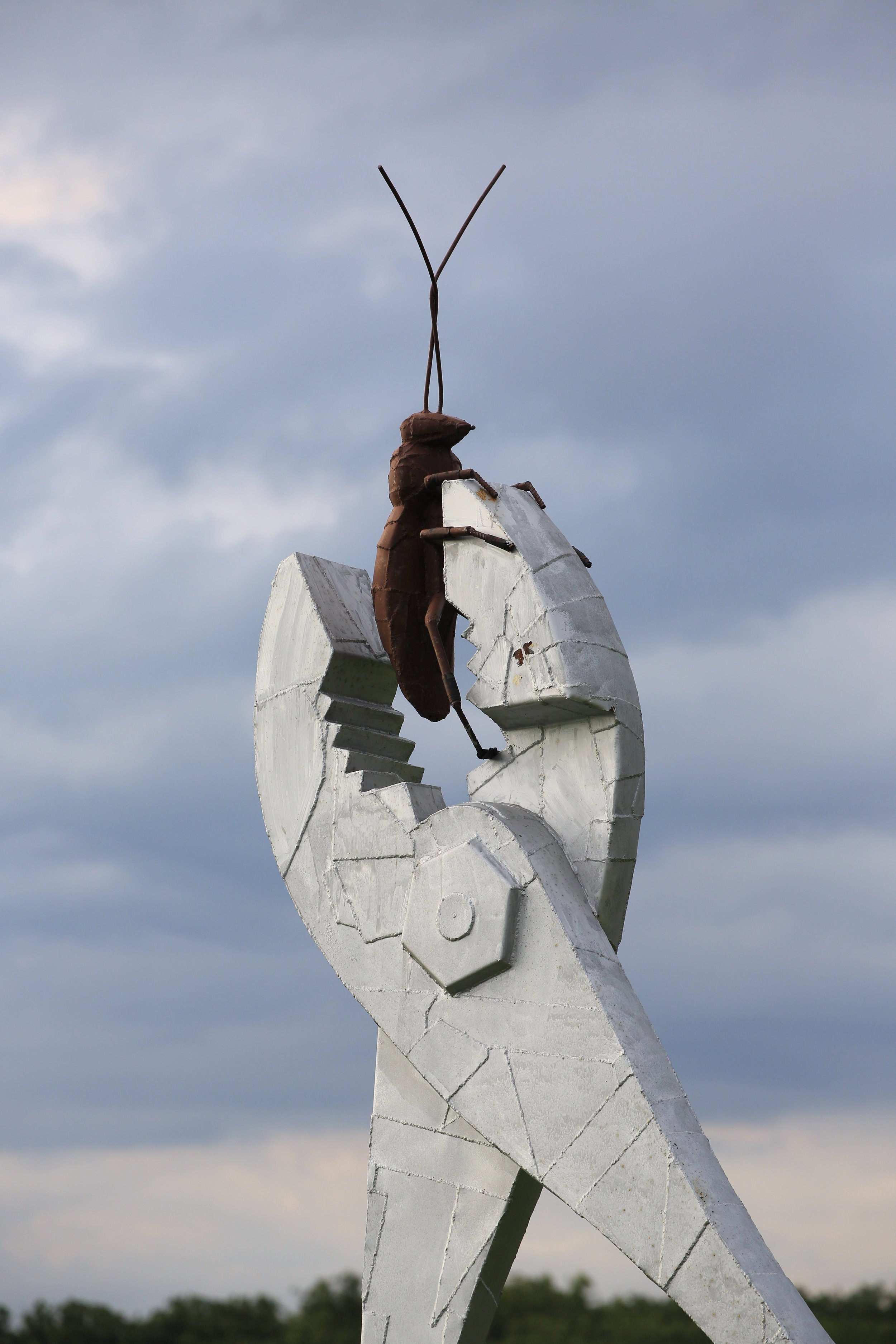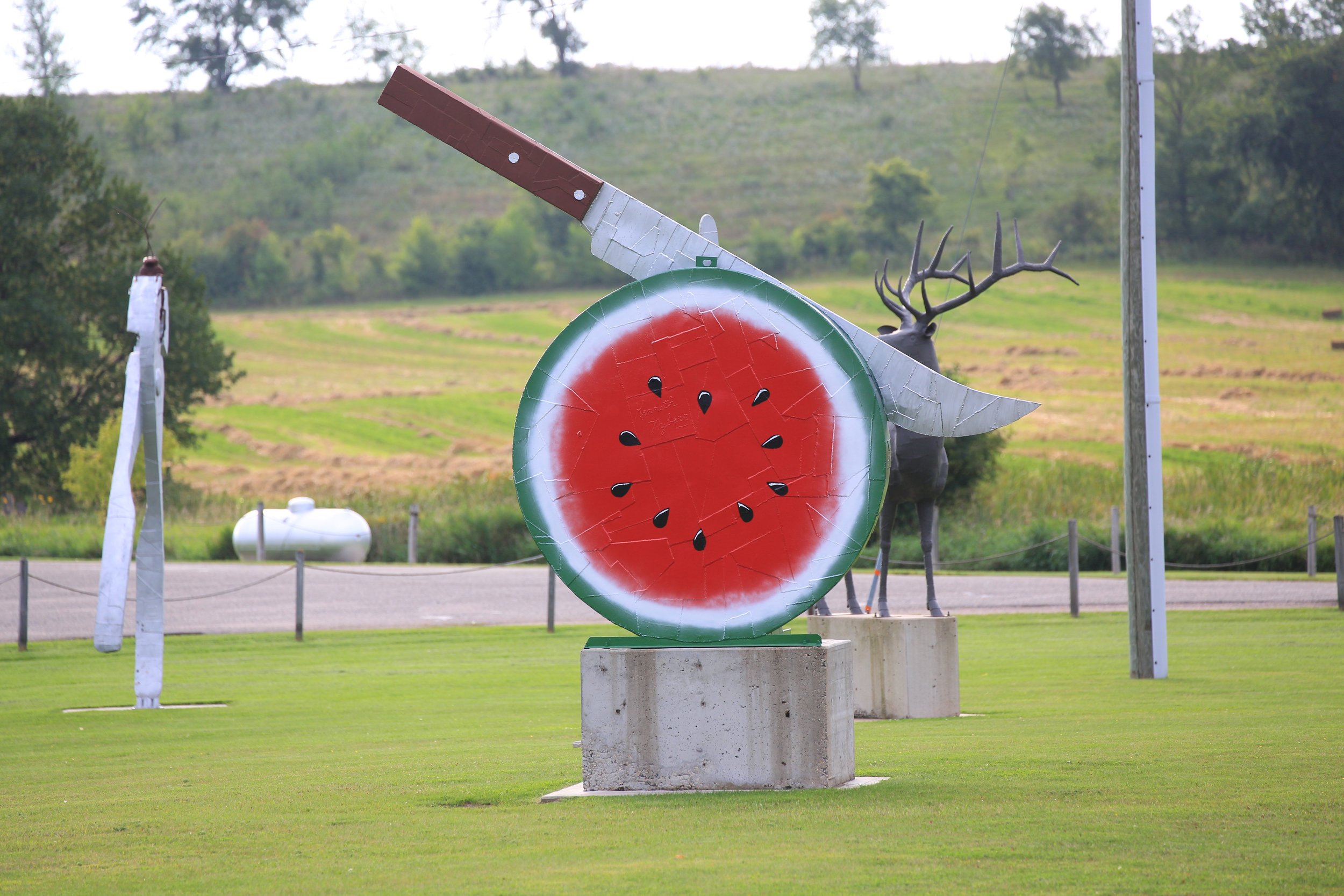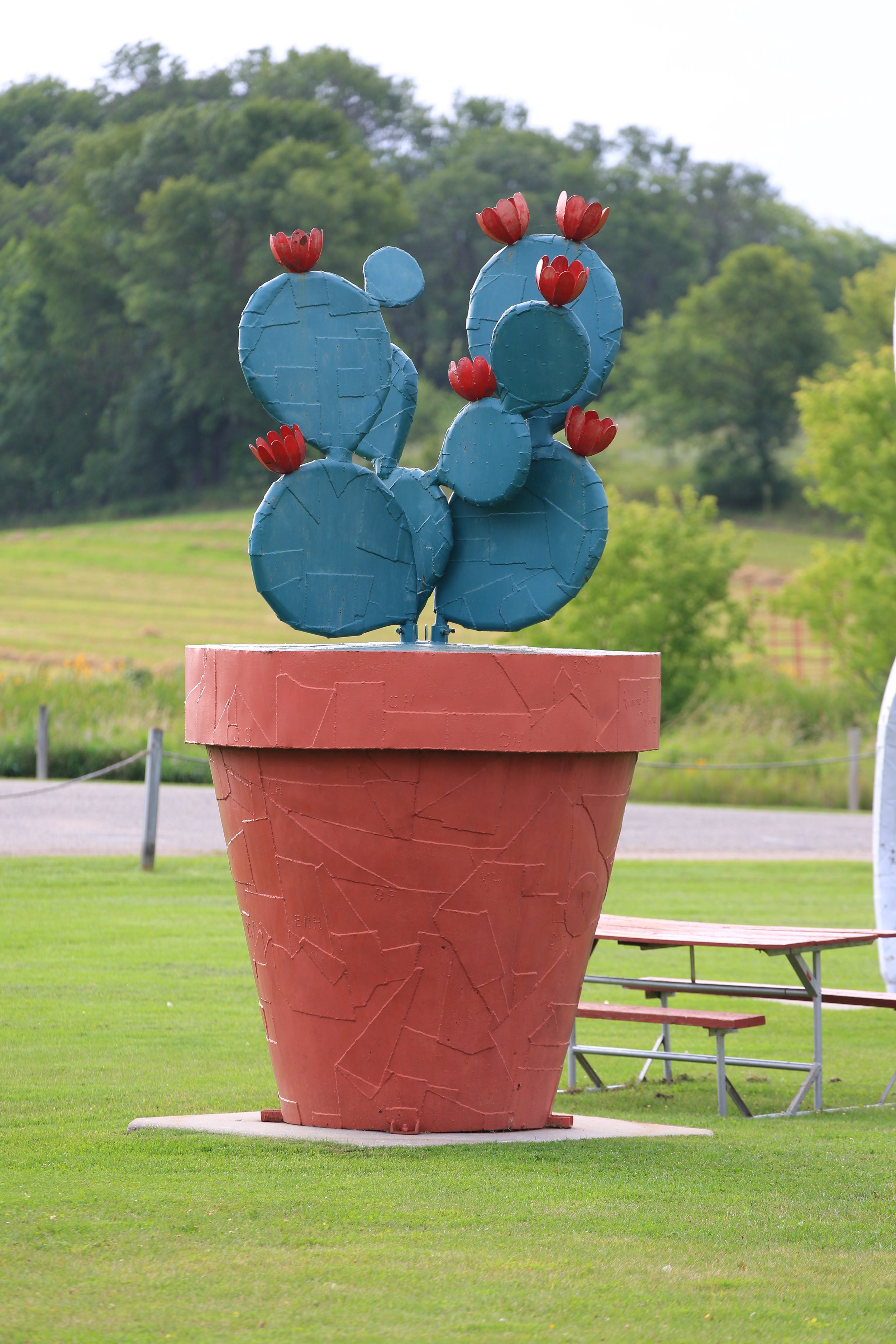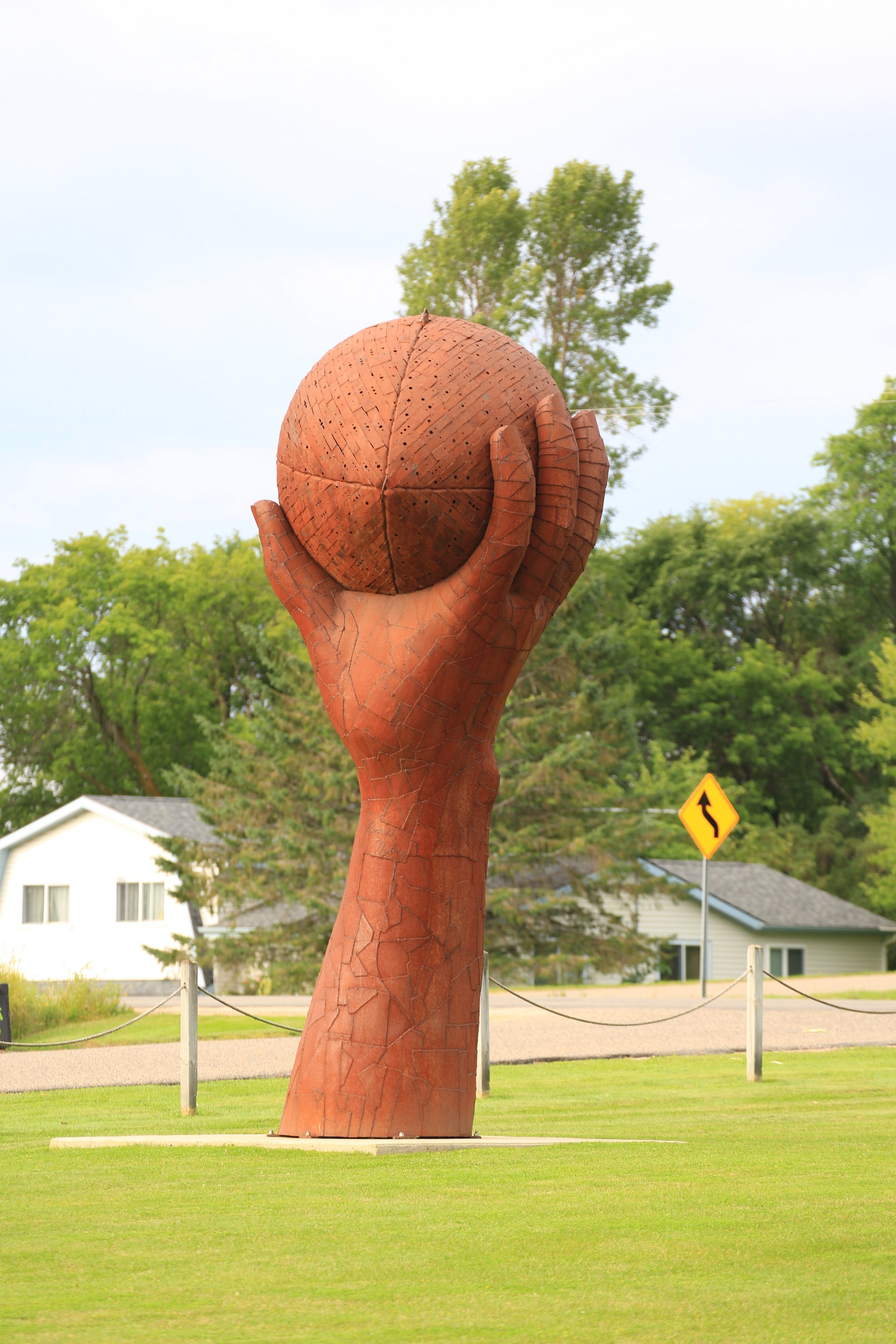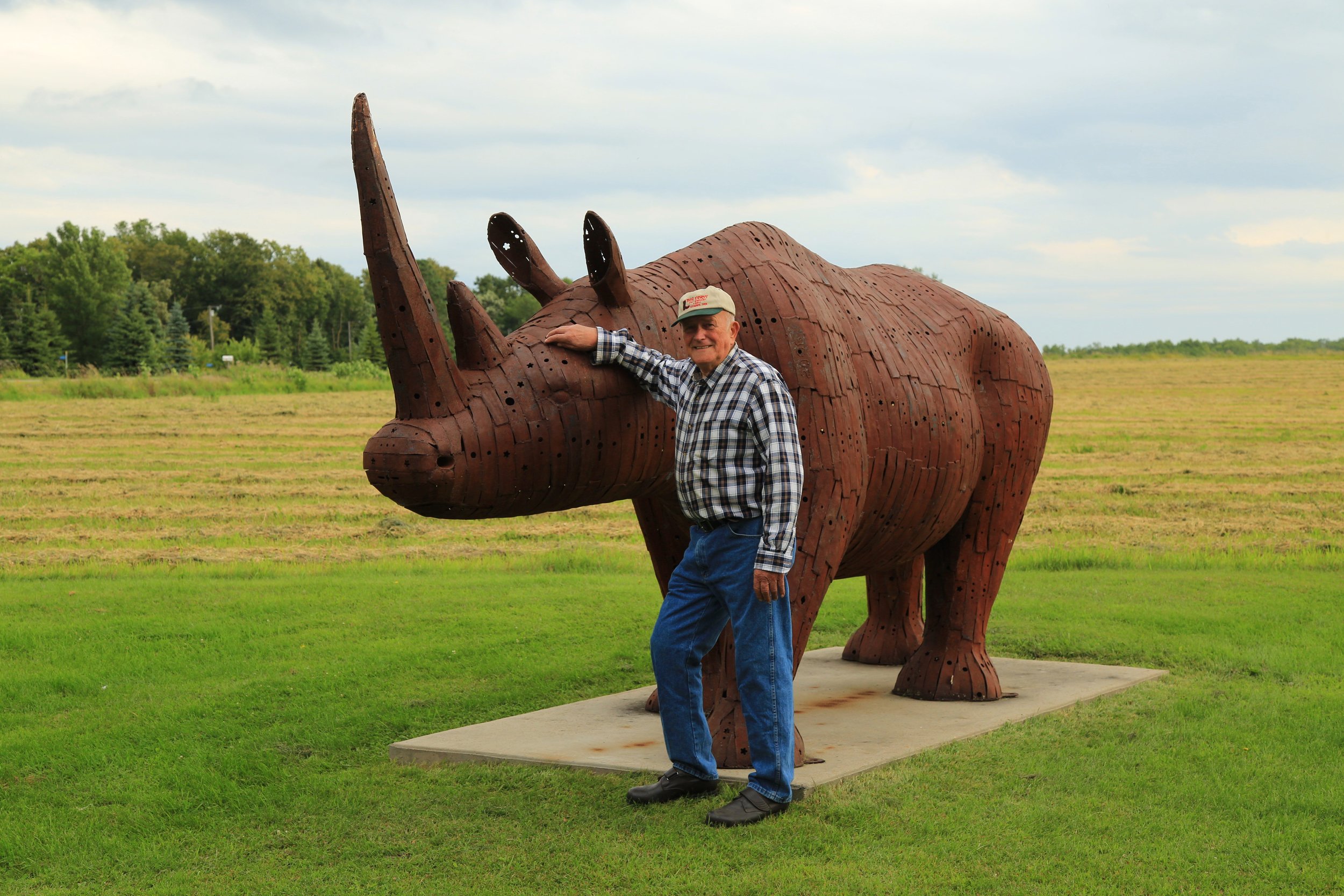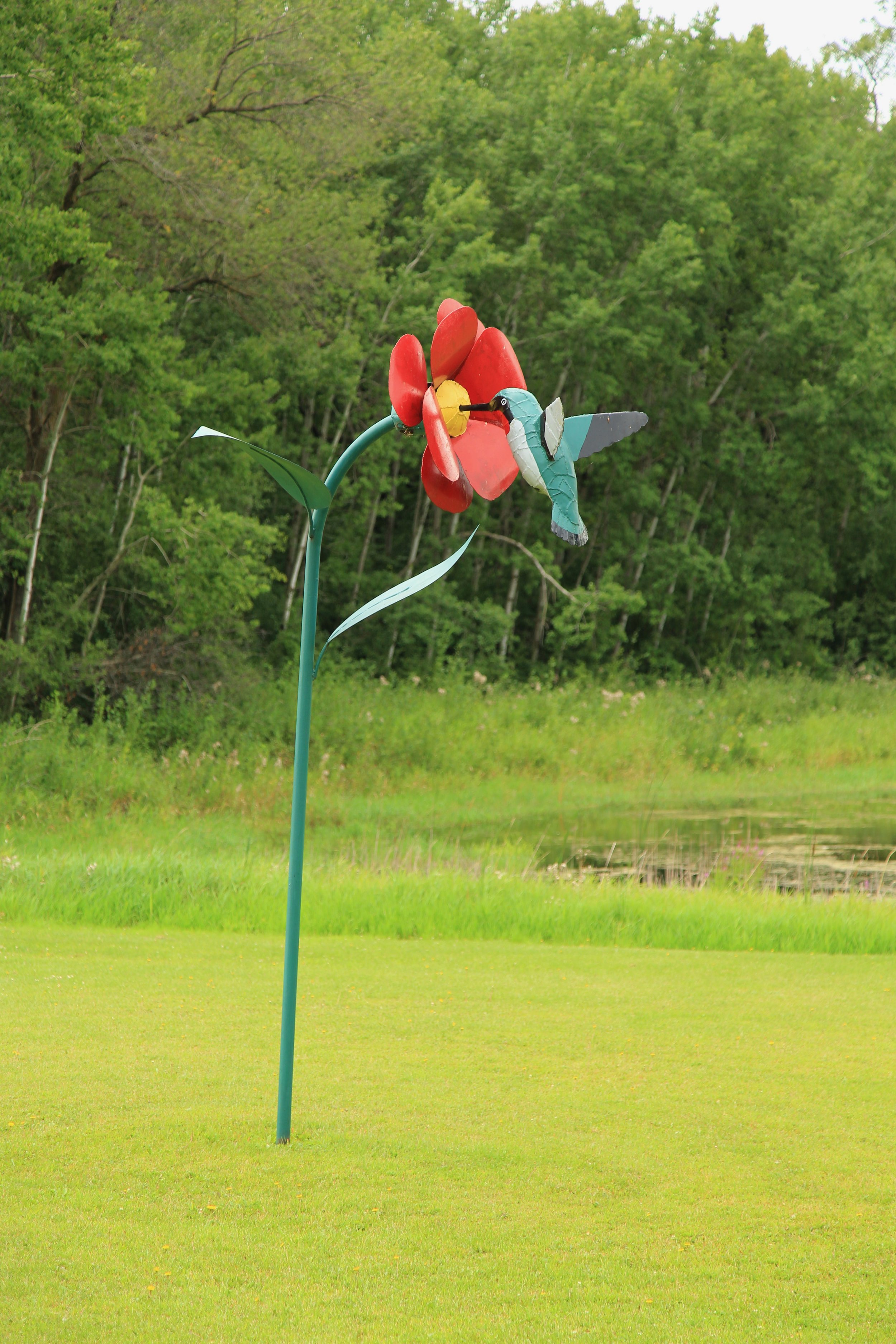Story by Michael Ransom - Photos by Roger Watts
Reading time: 8 minutes
Ken Nyberg
It takes some men much of their lives to find their calling; many never do. Ken Nyberg, of Vining, Minnesota, found his calling fairly early in life, nearly forty years ago, in a most unlikely place—a pile of scrap iron in his company’s workshop. Vining, population seventy-nine, is in west central Minnesota; Ken has lived in or within five miles of it his entire life. All four of his grandparents came from Norway; this explains much about his hard-working, modest, wry-humored ways.
Friends of Ken were getting married back in 1983, and he thought they should have an amusing gift. At the time, he worked in the grain elevator construction business. One afternoon, at his company’s shop in Vining, a pile of scrap metal lying on the floor caught his eye. He picked up several pieces and made a life-sized tree from them. He recalls, “I thought a family tree would be an appropriate present for them. It turned out to be a dumb-looking thing, but we put it up in their yard and lit it with spotlights while they were on their honeymoon.” Soon after, Ken completed his second sculpture—a dog by a hydrant. “The tree needed a dog, right?”
Counting the tree and the dog, Ken has completed eighty-seven “whimsical sculptures” and is now working on number eighty-eight—a life-sized hippopotamus. Many of his works are displayed in Vining. He says, “There’s a stethoscope at the clinic; a bulldog and hornet up at the high school; a lion on a trailer that the Lion’s Club uses for its parade float; a doughboy (WW I infantryman) at the Landmark Center, which used to be the doctor’s office on Main Street; and a Leif Erickson statue outside the old school, which is now a community center where the Sons of Norway meet once a month.”
Many of his works are in towns within a fifty-mile mile radius of Vining. Ken notes, “There’s a tractor near ‘Mills’ (New York Mills), a Spartan at the college in ‘Fergus’ (Fergus Falls), a sunflower in Breckenridge, a buffalo out in Wahpeton (North Dakota), a panther at the Parkers Prairie high school, and an otter up at Otter Tail.” The biggest collection of Ken’s work, however, can be seen in Nyberg Park next to the Big Foot Gas, Grocery, and Deli along Highway 210 on the west end of Vining. The furthest-away location for his work is Byron, near Rochester in southeast Minnesota—there’s a bear at the high school and two bear cubs by a stump at the elementary school.
Until his retirement in 2000, Ken’s fulltime job required travel to many parts of Minnesota and North and South Dakota, so he worked on his sculptures in the evenings and on the weekends. A few years after completing the dog and hydrant, Ken constructed a forty-four-foot by sixty-foot building a quarter mile from his home, where, for a year or two, he stored corn. In 1989, he converted the building to a shop, which, he says, “I always knew I would be going to do.” Then he began in earnest on his third project, Big Foot, which he would complete in about three years. All of the sculptures he’s made since have been constructed in his workshop, just a stone’s throw from his house.
Ken is not sure where the ideas for his works originate. Some are logical, for example, high school mascots or the lion for the Lions Club. But a giant pair of pliers squeezing a large bug? He says, “The ideas just come to me. I can’t explain it. I’ll think of many things that go by the wayside, too. I’ll not build them, because I’ll think of something else before I get around to making them.”
Once Ken decides to proceed with an idea, he usually buys a small toy or shelf ornament to use as a model. A few of his sculptures are done from photos. His main tools of the trade, other than the metal scrap, include a welding torch and metal rods. Ken says, “I basically make my statues from leftovers. Old lawnmower blades, whatever. I liken what I do to when a seamstress finishes a dress and from the remaining material makes another piece of clothing. It’s the same for me. Our construction projects began with large sheets of steel, and when we finished, there would be many odd-shaped pieces left. That’s what most of my statues are made of.”
There’s a wide range of time that Ken spends on his statues. “There’s no fast way to do these,” he says. He completed a slightly-bigger-than-life-sized raven and blue heron each in thirty hours. But the two bear cubs for the Byron school took seven hundred hours. Though he’s committed to his work, he’s not a slave to it. He says, “Some weeks I work half a dozen hours. Other weeks, twenty. I don’t have a set schedule or routine. Through my work years I had enough schedules; I don’t need any more.”
What is it about these sculptures that compels Ken to make them? “I like doing something different. I wouldn’t be any good on an assembly line–type of job, making the same thing over and over. As a kid, with the small amount of equipment I had, I created some unusual, crazy things. I wouldn’t want to brag, but I did well in art in school, so I had some artistic talent from a young age.” And what about titles for the pieces Ken makes? “They don’t need any fancy names. Why not call a lion a lion?”
Big Foot was Ken’s first extremely large sculpture. Since then, he has completed many more sizable pieces. The twenty-foot-high pliers in Vining is his tallest. The giraffe at Nyberg Park, at eighteen feet, is a tall one, too. The bear cubs and tree stump weigh more than two tons. Large pieces of art pose logistical challenges. For some large sculptures he will make sections during the winter and then assemble them in the spring. For example, he made parts of the large tractor on display in New York Mills during the winter, and in the spring, the sections were loaded on a truck with a crane and driven to the Mills site, where Ken completed the sculpture. Over another winter, he built his giraffe in sections: head, neck, and body. In the spring, the sections were pulled outside the shop through the ten-foot by ten-foot door, and his son-in-law came with a forklift to put the head on the neck and then lift that assemblage on top of the body and legs. Says Ken, “It gets to be a process.”
Sometimes precision poses as much challenge as size. He had to dismantle his large sculpture of a square nut, the second one after Big Foot, a few times to get it looking right from all angles. There were tight places in the sculpture that proved difficult to reach and weld. Ken makes a point to finish one piece before starting another. He regrets, “I gave up on one that I shouldn’t have. The reason was that I started something else before it was done and laid it by the wayside, and I never completed it.”
Many people ask Ken to name his favorite piece. His answer? “I don’t have a favorite. They all could be favorites. Or none of them. Everyone, though, who asks me the question has their own favorite and they enjoy telling me what it is and why.” He also admits that his work isn’t the attainment of a lifelong dream. He knew when he retired that he wanted to enjoy time in a shop, but he thought it would be woodworking rather than building giant iron sculptures. His home is on a lake, but he finds little time for fishing (or woodworking). “A person can’t do everything,” he says.
Ken will celebrate his eightieth birthday in 2018. He credits his sculpting for helping him stay young. “I tell folks, ‘Everybody needs to be doing something. Keeping busy is good for you.’ Out here in farm country, so many of the old farmers worked hard seven days a week their entire lives. I noticed when I was young that when farmers finally decided to sell their farms and move to town, you could just about plan on going to their funerals within a year. They were so used to the constant work—day in and day out, whether they felt good or not—that when it went away, they wilted away, too. I plan to keep on creating my sculptures as long as I can.” The physical aspects aren’t too demanding for Ken. He has hoists for lifting heavy things, and he can get help if he needs it. He comments, “I run out of gas easy, so I rest when I’m tired. My biggest issue is that my hands shake quite a bit, which makes the welding difficult, but I’m able to brace myself while doing it.”
When asked what projects he has bubbling in his mind, he replies, “Honestly, all I have on my mind right now is to get this hippopotamus done.”
Follow Michael Ransom (www.facebook.com/ezwritermike) and Roger Watts (www.facebook.com/roger.p.watts.9) on Facebook




